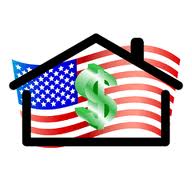The Obama Plan: Making Home Affordable Program
My Home is in Foreclosure!
Are you one of the many homeowners facing foreclosure? Do you owe more on your house than what it is worth? Have you or your spouse ever lost their job or faced a reduction of income? Many people both across the country and here in New Jersey are answering, “yes” to these looming questions. Is there a way to save the home you live in?
The Obama Plan – In theory:
In March 2009, President Obama and his administration set up guidelines for the Making Home Affordable Program. This changed the way estate planning in NJ would work. The guidelines were established to help struggling homeowners try and remain in their homes by applying for assistance through the Home Affordable Modification Program (HAMP).

In order to be eligible for HAMP the borrower must meet the following initial requirements.
- The borrower is delinquent on their mortgage or faces imminent risk of default
- The property is occupied as borrower’s primary residence
- The mortgage was originated on or before Jan. 1, 2009 and the unpaid principal balance must be no greater than $729,750 for single-family properties.
If a borrower meets the initial requirements of HAMP, they are not automatically a candidate for the program. The lender will then review the borrower’s current financial situation on a case by case assessment in an effort the determine whether the borrower is an ideal candidate for the HAMP program. In order to meet further eligibility requirements, the borrower will be required to submit a detailed financial statement reflecting the current income versus the current expenses, a hardship letter, and proof of income, current banking statements, and the most recent tax return filed with the IRS. After reviewing a borrower’s eligibility for the program, a lender may take steps to modify the monthly mortgage payment so that 31% of a borrowers total gross monthly income is the mortgage payment due to the lender.
The goal of HAMP is to get lenders to enter into modification agreements by reduction of the interest rate to as low as 2%; if necessary, extend the loan term to 40 years; and if necessary, defer a portion of the principal until the loan is paid off and waive interest on the deferred amount.
The Obama Plan – The reality
While HAMP is aimed at trying to help homeowners, the reality is that far too many borrowers are not qualifying for HAMP. The reason for non-qualification is quite simple; lenders are not mandated by the Obama Plan to modify any existing loan, rather the lenders are trying to help struggling homeowners.
There are several reasons after review of the financial statement that a lender may deny a borrower eligibility under HAMP:
- The borrower’s dept to income ratio. In essence this means even if the lender reduced your payment to 31% of your gross wages; reduced interest as low as 2% and converted your mortgage to a 40-year mortgage, your monthly debt still exceeds your income. As a result you are not a candidate for HAMP.
- The borrower filed for Bankruptcy. In an effort to reduce their debt, borrowers are filing for Bankruptcy and then seeking to modify the mortgage through a modification program. However, if, during the course of the Bankruptcy proceeding, the borrower failed to re-affirm their mortgage, many lenders are declining acceptance into HAMP. Similarly, if you were already accepted for HAMP and are making payments in accordance with the trial payment period. Lenders are rejecting payments received after a bankruptcy filing. While HAMP does not exclude those who filed for bankruptcy under the program, lenders are, at an alarming rate, denying entry to the program or rescinding the HAMP trial period payment plan when a bankruptcy has been filed.
The borrower’s house is “upside down” with respect to the mortgage. The term “upside down” essentially means that the amount owed on the current mortgage (which may include past due payments, late fees, attorneys fees and costs) exceeds the current value of the house. In many cases where there is not equity remaining in the house, lenders are not willing to modify the existing mortgage or add the past due amount to the back end of the loan because, simply put, lenders are not going to lend more than what a property is worth at the time of the modification. A New Jersey estate lawyer can help identify the best path for you to take in saving your home.
